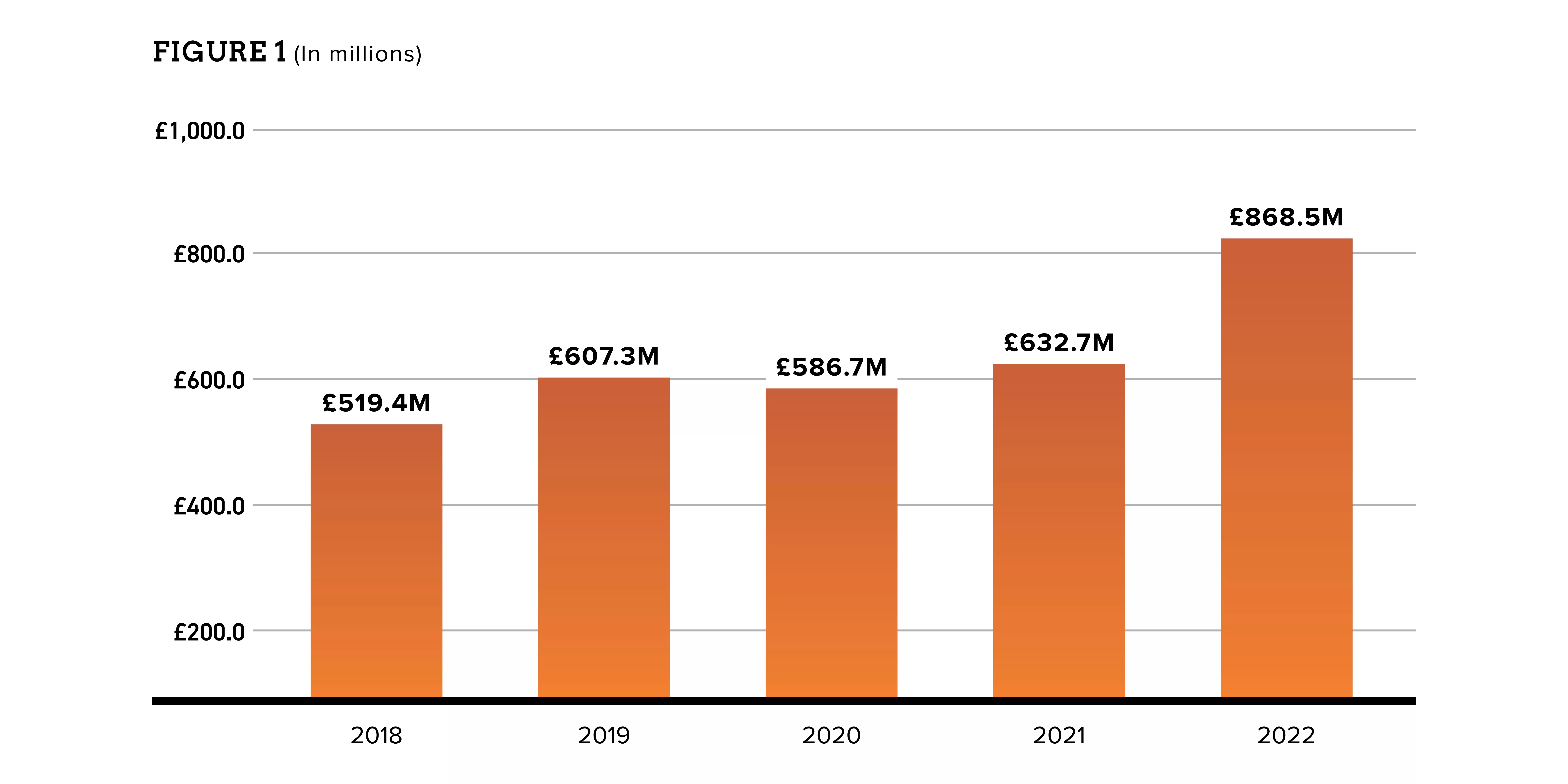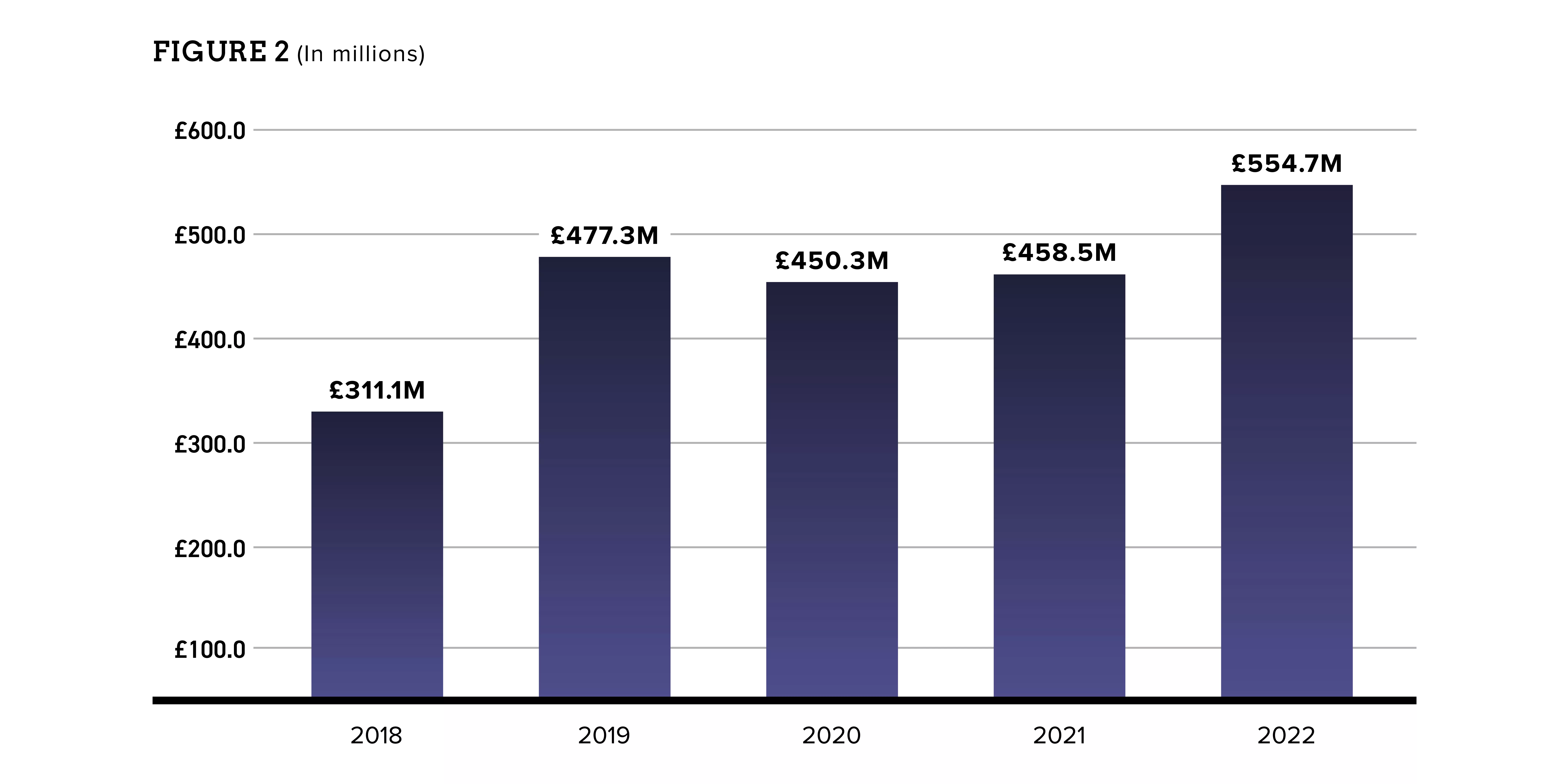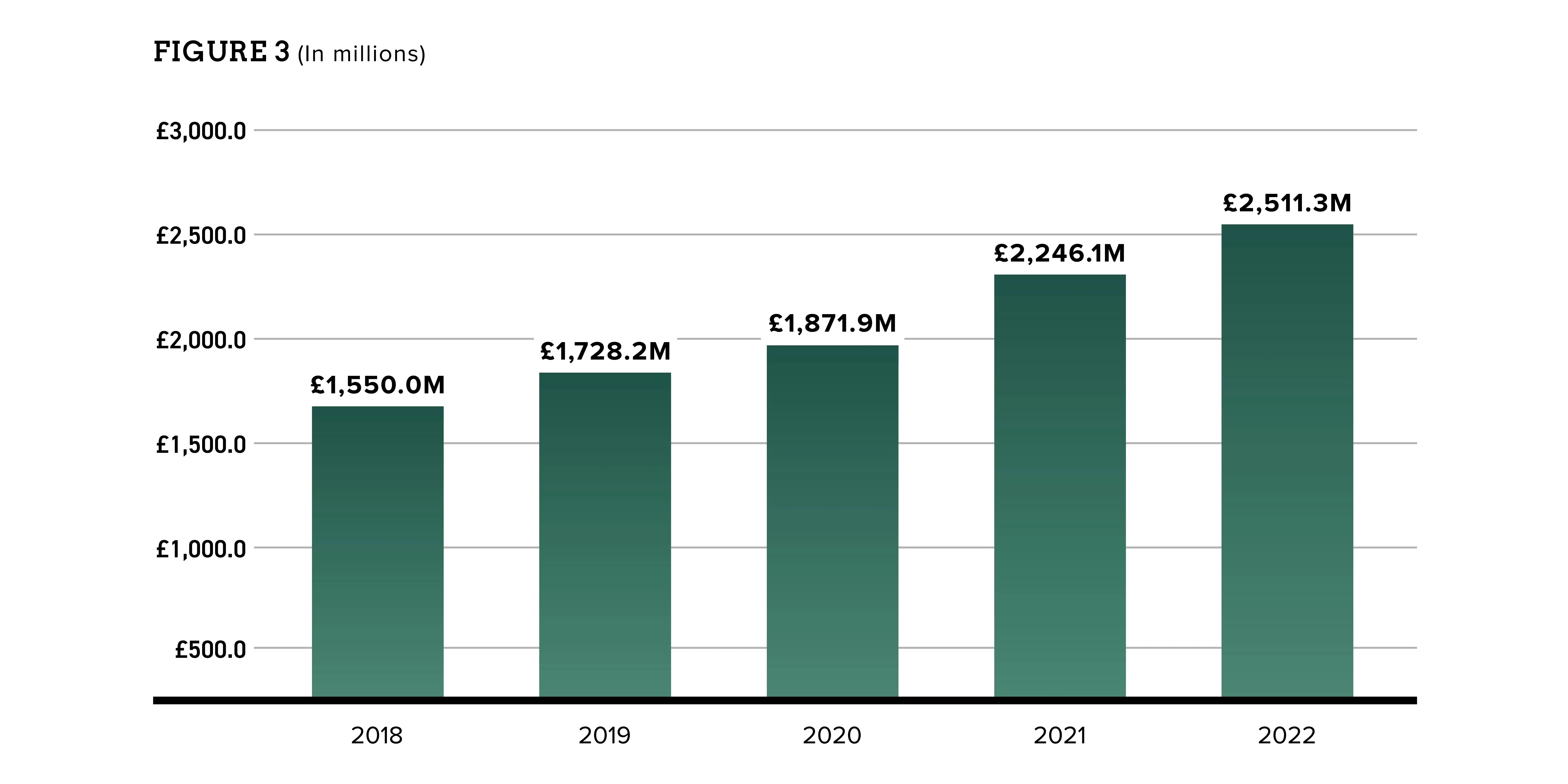National Philanthropic Trust UK is pleased to publish our eighth annual UK Donor-Advised Fund Report.
A donor-advised fund (DAF) is a philanthropic fund established under an umbrella charity who administers the DAF account on behalf of the donor. A donor makes an irrevocable charitable contribution, receives immediate tax relief and then recommends charitable grants from the DAF account over time. The donor also recommends how the charitable assets are invested before being granted out.
Our 2023 UK Donor-Advised Fund Report examines data from 2018 to 2022 from UK charities that offer donor-advised funds. The findings confirm that donor-advised funds continue to play an important role in UK philanthropy. DAF donors respond quickly and generously in the face of pressing challenges and serve an important role in sustained giving.
In 2022:
- Grants from donor-advised funds to other charities were £554.7 million, an increase of 21 per cent over the prior year.
- Contributions to donor-advised funds were £868.5 million, a 37 per cent increase, compared with prior year’s contributions.
- Charitable assets in donor-advised funds total £2.5 billion — an increase of 12 per cent over the prior year.
- The aggregate grant payout rate from donor-advised funds was 24.7 per cent in 2022.
Donors and their advisors increasingly use donor-advised funds as the modern alternative to establishing a grantmaking charitable trust or foundation. Since every pound in donor-advised fund accounts is destined for charitable organisations, the increased use of donor-advised funds is good news for British charities and charities around the world that receive grants from DAFs.
John Canady
CEO
About This Report
A donor-advised fund (DAF) is a giving vehicle that enables donors to support charitable organisations. DAFs can be used as an alternative to a grantmaking charitable trust or foundation. National Philanthropic Trust UK provides this report as a public service to those who are interested in the impact of this charitable giving vehicle.
A Glossary of Terms
Charitable Assets
The amount charitable sponsors hold and manage in donor-advised fund accounts. Some charitable sponsors manage other types of funds as well. This report is limited to assets in donor-advised fund accounts.
Charitable Organisation
A charity. In the context of this report, a charitable organisation can be either a charitable sponsor of donor-advised funds or the recipient of a donor-advised fund grant. A UK charitable organisation is registered at the Charity Commission and a foreign charitable organisation is eligible to receive grants from the UK according to HMRC and Charity Commission regulations. Donations to a charitable organisation are eligible for tax relief. A charitable organisation serves broad public purposes in educational, religious, scientific, and artistic fields, among others, as well as the relief of poverty and other public benefit activities.
Charitable Sponsor
A charitable organisation that manages donor-advised fund accounts. Charitable sponsors provide services to ensure that potential grant recipients are qualified charitable organisations and administer donor-advised fund accounts to ensure compliance with all regulations. Also called sponsoring charity, fund sponsor or umbrella charity.
Contribution
Amount a donor donates to a donor-advised fund account when establishing the fund or adding money to it.
Donor-Advised Fund
A philanthropic giving vehicle administered by a charitable sponsor. A donor-advised fund allows donors to establish and fund the account by making irrevocable, tax-relieved contributions to the charitable sponsor. Assets in the account are invested based on the donors’ recommendations. Donors then recommend grants from those funds to other qualified charitable organisations.
Grant
A transfer of assets from a donor-advised fund account to a qualified charitable recipient.
Market Overview
In 2022, total estimated charitable giving in the United Kingdom was £12.7 billion, according to the CAF UK Giving Report. Contributions to DAFs totalled £868.5 million in 2022, which equates to 7 per cent of total individual giving in the UK.
In this report, we analyse giving to and from DAFs, one type of charitable giving vehicle, for fiscal year 2022. Charities operate on different fiscal year periods, which means the reporting period began as early as 1 May 2021, for some charities and ended as late as 31 December 2022, for others.
Geopolitical and economic indicators play an important role in charitable giving. Although COVID eased, 2022 brought new challenges and upheavals to the UK and the broader world. Russia invaded Ukraine and natural disasters occurred in Afghanistan, India, and East Africa, amongst others. At home, the UK had three prime ministers in just two months, the pound fell to a record low against the dollar, and inflation hit a 41-year high. We also marked the sad passing of Queen Elizabeth II, Britain’s longest-reigning monarch.
Contributions Increase Rapidly
Contributions to donor-advised funds in 2022 totalled £868.5 million, an increase of 37.3 per cent. The compound annual growth rate was 13.7 per cent for contributions from 2018 to 2022.

Grants Total £555 Million
Grants from donor-advised funds to charitable organisations totalled £554.7 million, an increase of 21 per cent. The compound annual growth rate from 2018 to 2022 was 15.6 per cent.

Charitable Assets Pass £2.5 Billion
Charitable assets under management in all donor-advised funds totalled over £2.5 billion in 2022, an all-time high. This is a 12 per cent growth rate compared to 2021. The compound annual growth rate for charitable assets from 2018 through 2022 was 12.8 per cent.

Observations and Projections
Looking back on 2022, the UK DAF market continued to grow across all key metrics: grants, contributions, and charitable AUM.
Contributions increased significantly in 2022. This growth was driven by donors who use donor-advised funds to set aside assets for strategic giving over the longer term. It is worth noting that the UK DAF market is still relatively small in size; the data can be impacted by some large contributions by individual donors.
Grants increased in 2022 reflecting donors’ generosity in the face of growing local and global needs. The cost-of-living crisis in the UK has placed increased pressure on charities, and grants from donor-advised funds help to provide sustained support over the longer term. The war in Ukraine and the growing climate crisis were also particular motivations behind grantmaking during this period.
What Lies Ahead?
We expect growth in donor-advised funds given that more donors are searching for more structured approaches to manage their charitable giving and are increasingly using DAFs as an alternative to setting up their own charity, charitable trust, or foundation. We also expect growth as donor-advised fund awareness increases amongst the wealth managers, lawyers, and accountants who advise philanthropists.
Based on our own experience and observed trends at our peer charitable organisations, we have seen an increase in contributions of non-cash assets. For example, donors who contribute appreciated shares receive two tax benefits: the gifted shares are not liable for capital gains tax (CGT), and the donor can also claim income tax relief for the market value. We anticipate that donors will increasingly donate non-cash assets to donor-advised funds in the coming years.
We have also seen a rise in the use of donor-advised funds to ensure regulatory compliance. Regulations – particularly around trustee responsibilities and grantmaking due diligence – are constantly evolving. Using donor-advised fund ensures that a donor is assured of regulatory compliance with the latest regulations.
We have also seen international donors using UK donor-advised funds to manage their philanthropy and cross-border giving.
We expect growth to continue because donor-advised funds are convenient and can be used as a giving tool in so many ways — by different generations, across different geographies, and on all time horizons.
Summary
Donor-advised funds continue to grow in all key metrics. 2022 marks the tenth year in a row of growth in contributions to donor-advised funds. Grants from donor-advised funds have grown at a compound annual growth rate of 15.6 per cent between 2018 and 2022. Donor-advised funds are becoming well-established as effective giving vehicles for active donors who want to support to their favourite charities.
Methodology
Organisations
This report examined 11 charities registered at the Charity Commission of England and Wales that sponsor donor-advised funds.
Primary Data Sources
The primary source for each charitable sponsor’s assets, contributions, and grants is the organisation’s Annual Report filed with the Charity Commission of England and Wales.
Secondary Sources
The following served as secondary sources for the above data and cited statistics:
- Filings at Companies House
- The organisations’ websites
- Survey responses from Charitable Sponsors
- CAF UK Giving 2023, Charities Aid Foundation
Projections are based on National Philanthropic Trust UK’s experience and anecdotal evidence over the past year, in addition to observed economic and political conditions.
Standard Fiscal Data by Filing Year
Since organisations have varied financial year-end dates, data was recorded in the filing year. For example, whether an organisation’s fiscal year ends on 31 March 2022 or 31 December 2022, the data will be recorded as 2022.
Payout Calculation
Payout from donor-advised funds is calculated as the current year’s grants divided by charitable assets held at the end of the prior year.
Acknowledgements
This report was prepared by National Philanthropic Trust UK in collaboration with Dr Catherine Walker of The Researchery, an independent research consultancy. Oliver Nicholl-Dovell provided data analysis and research assistance.
National Philanthropic Trust UK gratefully acknowledges all of the organisations that shared their donor-advised fund statistics and information.